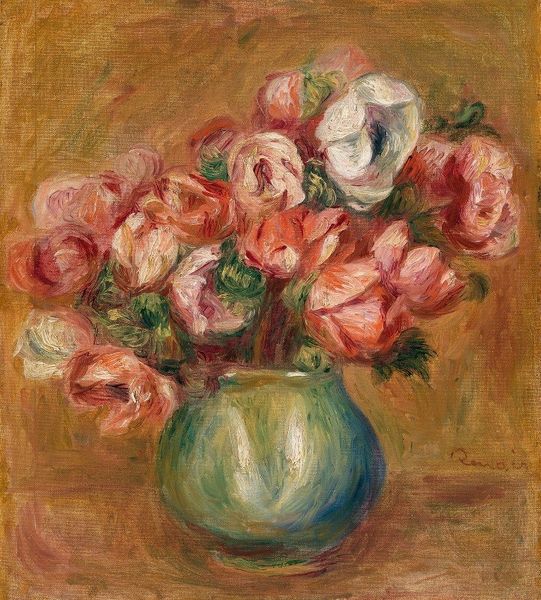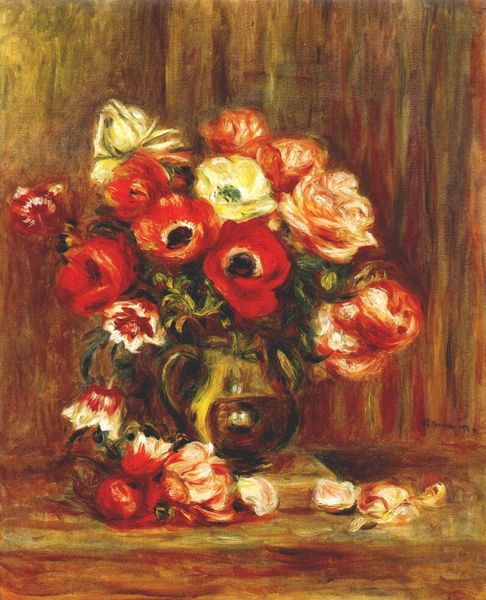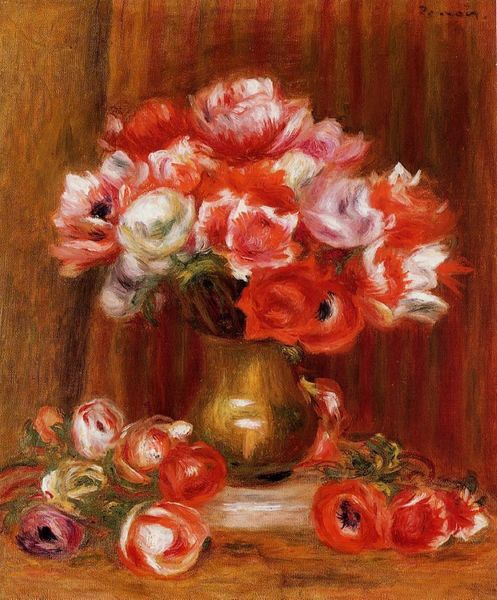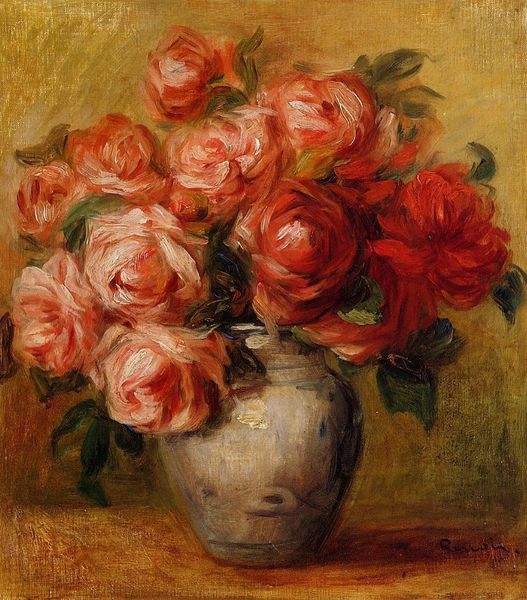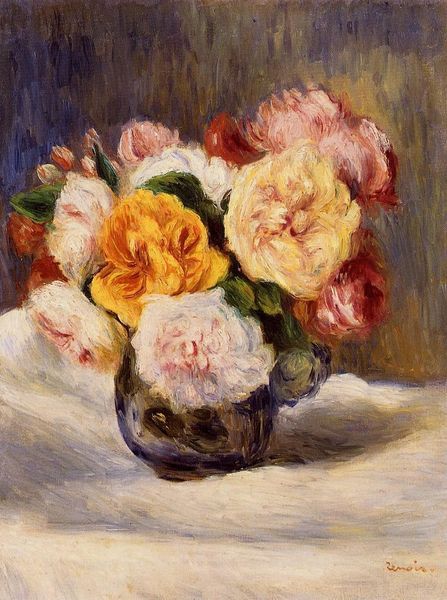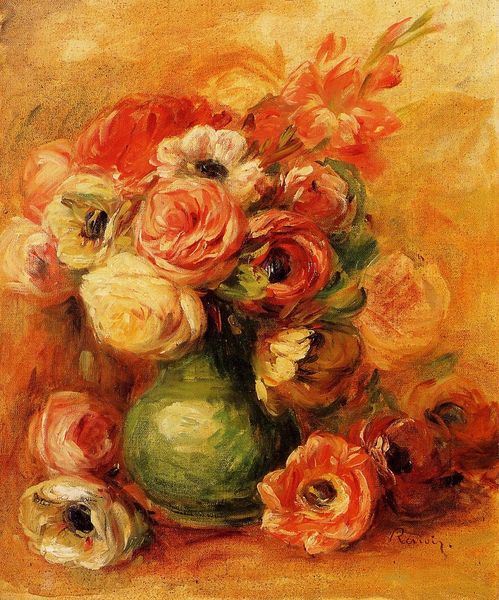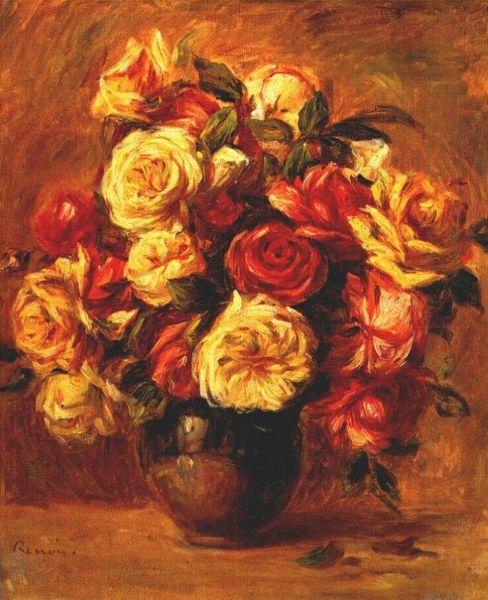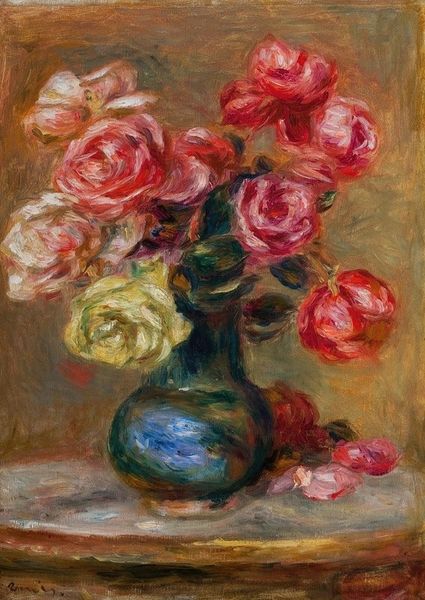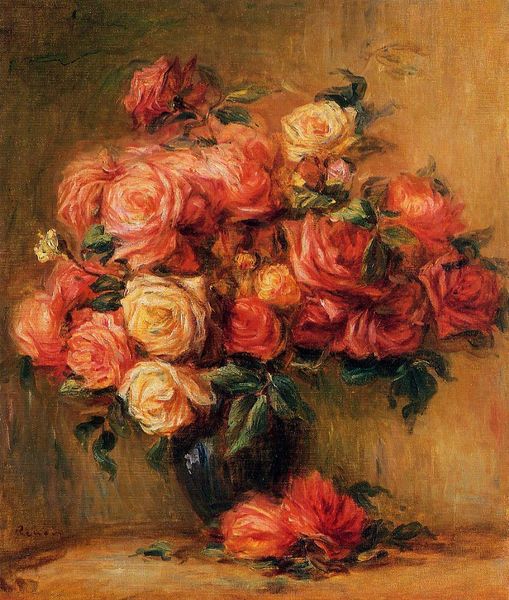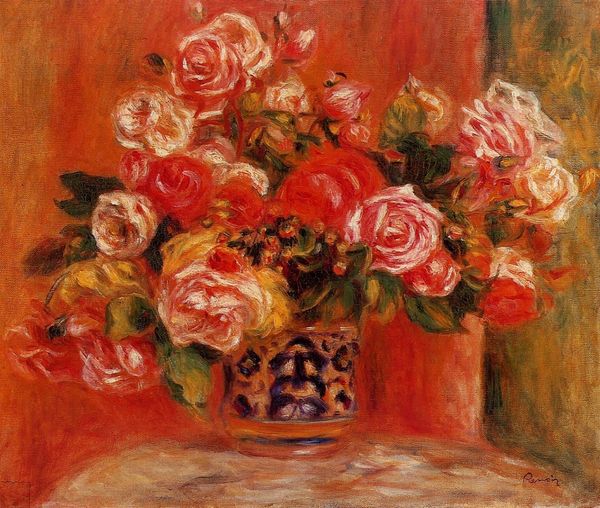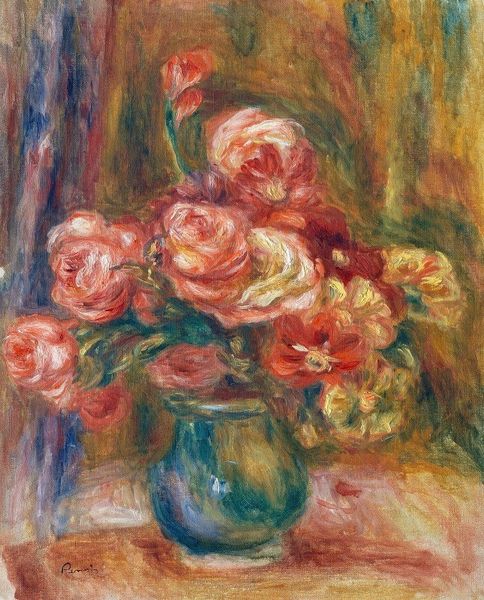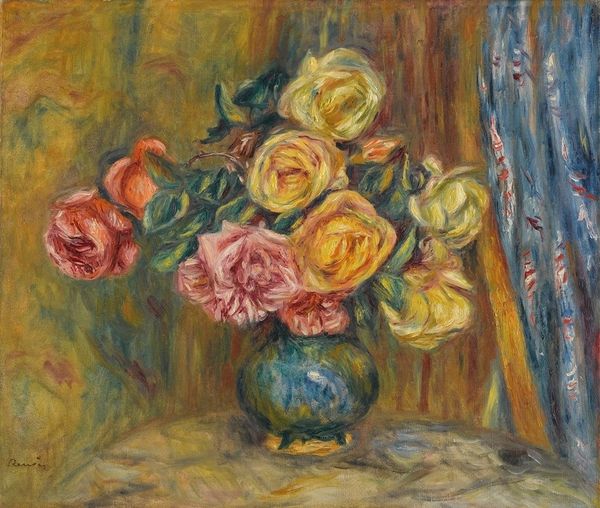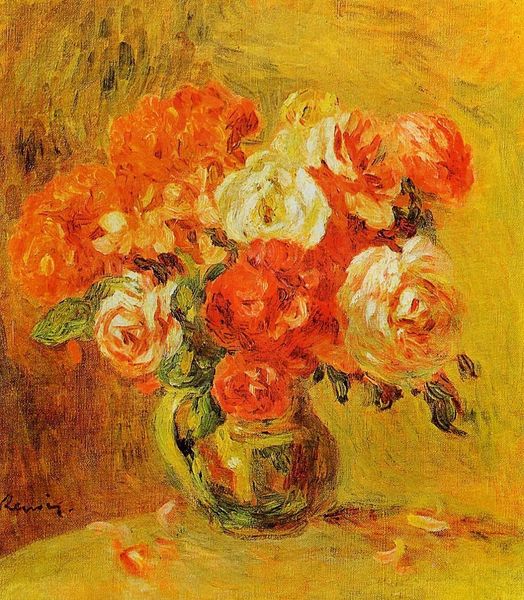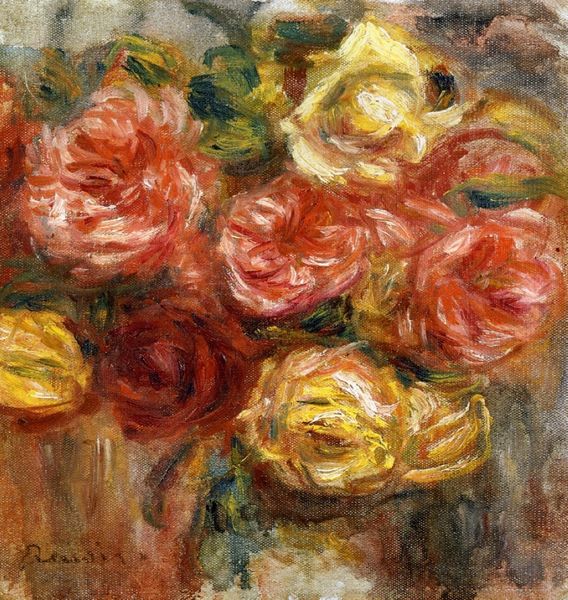
Copyright: Public domain
Curator: Renoir's "Roses in a Blue Vase," painted in 1906. What a treat! I always find myself drawn to its vibrant stillness. What's your first impression? Editor: There's something very soft and almost melancholic about it. The hues feel muted, not as dazzling as I would have expected. Curator: Yes, there’s a tangible quality of oil paint. Observe the materiality; see how Renoir captured light by layering strokes to suggest form, particularly on the roses? It feels less like representation, and more about exploring the medium’s capacity for texture. Editor: True, and I notice the blue vase seems grounded against this ambiguous plane of gold. It does spark consideration of domesticity, right? Still life has historically been confined to, or defined as feminine in painting, a site of middle class pleasure or beauty. Curator: I agree; the vase becomes both container and object—a functional vessel elevated through artistry. It forces us to consider labor. Editor: The labor in cultivation, arrangement, the quiet expectation of floral beauty available only to certain echelons of society… the bourgeoisie capturing a fleeting moment for permanent display. Curator: Yet look closely! Despite the implied fragility, his brushwork asserts solidity, making the ethereal substantial. Renoir understood how to create illusions—of depth, of texture, and of the sensual experience of these roses as consumer objects. Editor: And speaking of illusion, do you feel a romanticisation, even fetishization, of the natural world here, obscuring questions around land and access? Where did these flowers originate? Who cultivated them, and at what cost? Curator: Well, Renoir painted many still lifes, particularly later in life when other subjects were more challenging. Perhaps they became about testing limits through repeated acts of production. What else do you see at play here? Editor: I see echoes of late-stage Imperialism: beautiful arrangements carefully plucked from contexts of resource extraction. That backdrop feels oppressive, in contrast with the immediate allure of the bouquet. It suggests there is beauty here, for some, created on a bedrock of stark inequality. Curator: Fascinating perspectives, thank you. It is true that Renoir gives us access to beauty in this frame, allowing us to consider beauty's role in our society. Editor: Indeed! We've only just scratched the surface on such a seemingly straightforward image!
Comments
No comments
Be the first to comment and join the conversation on the ultimate creative platform.
